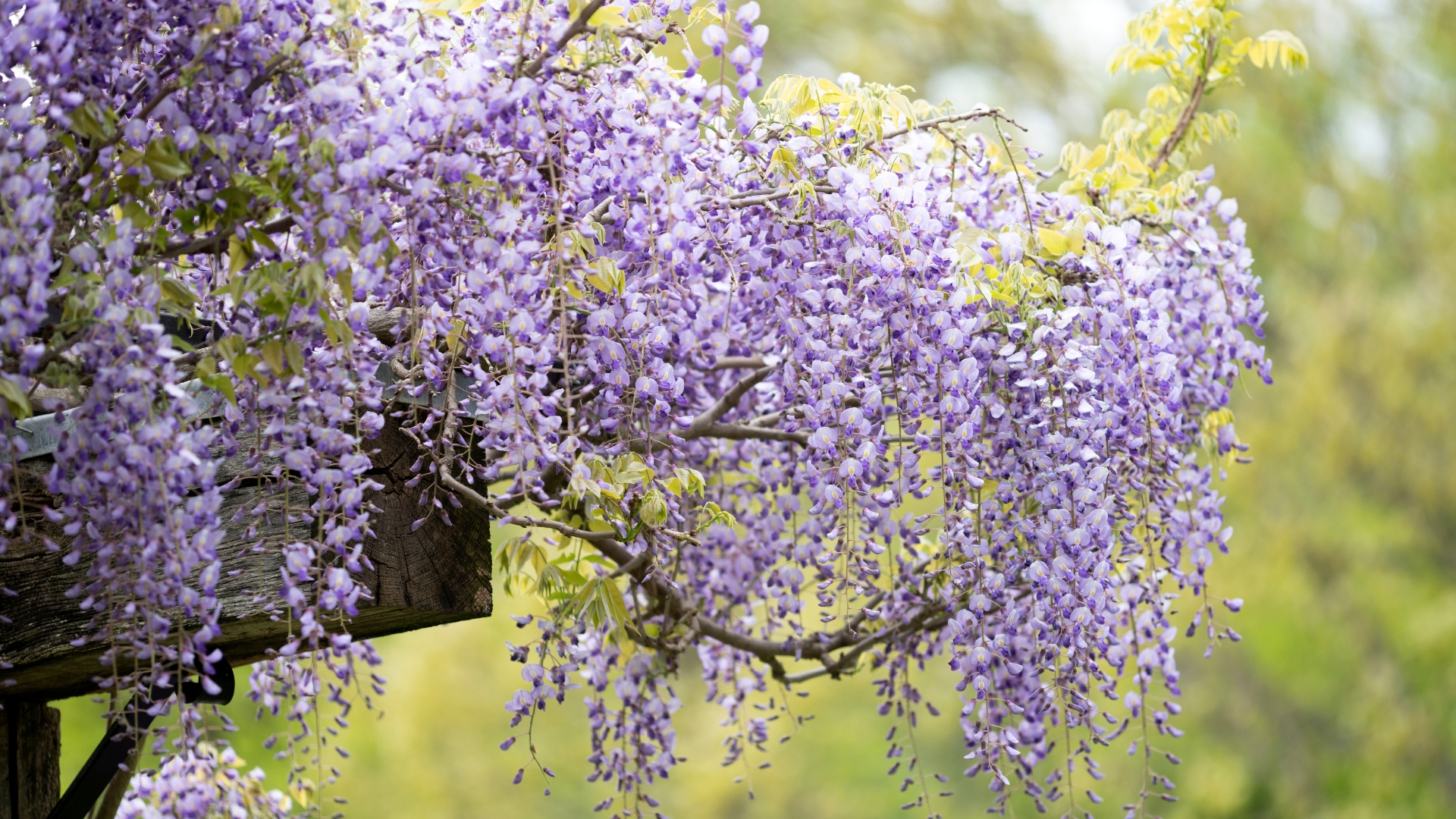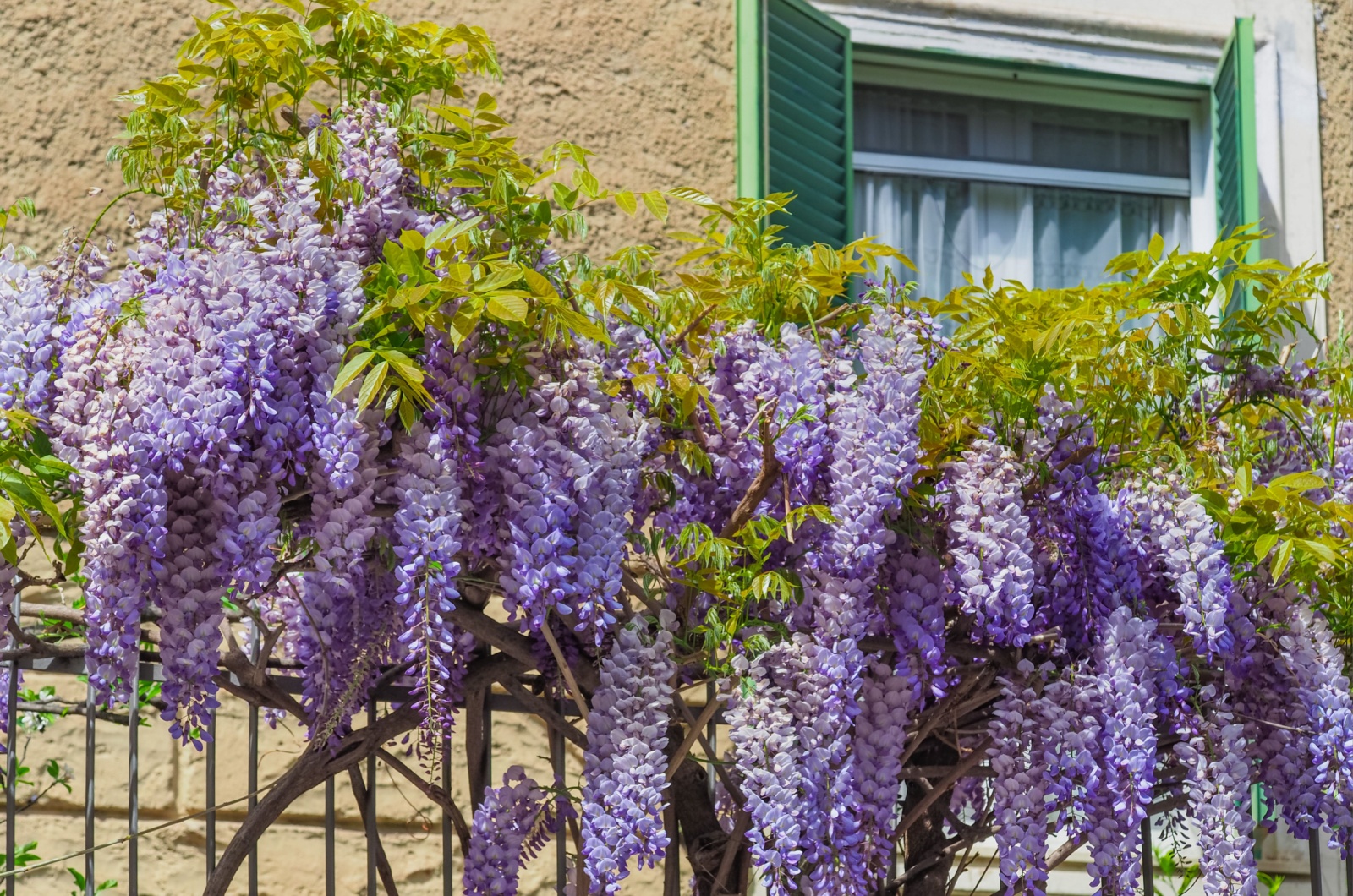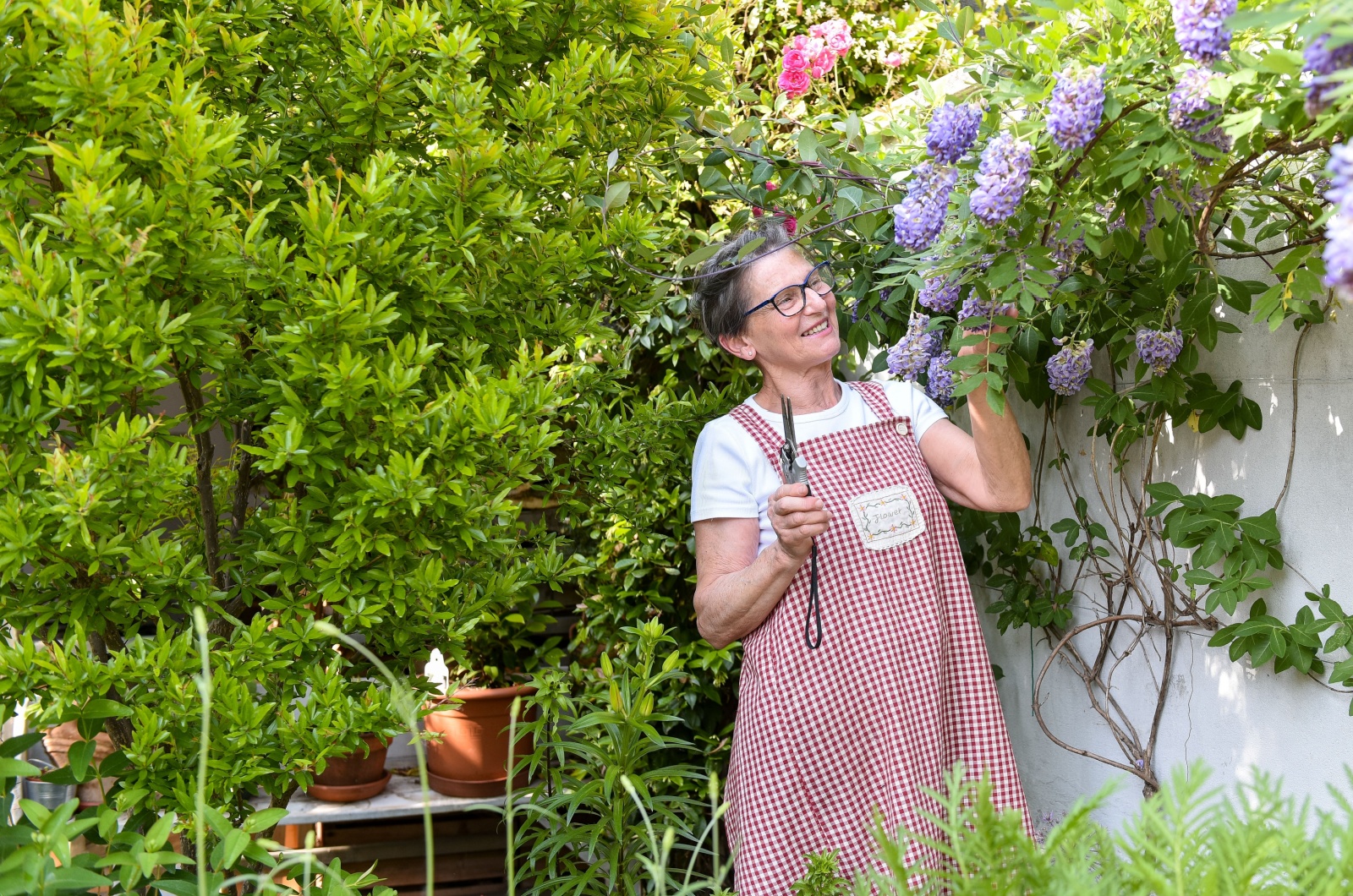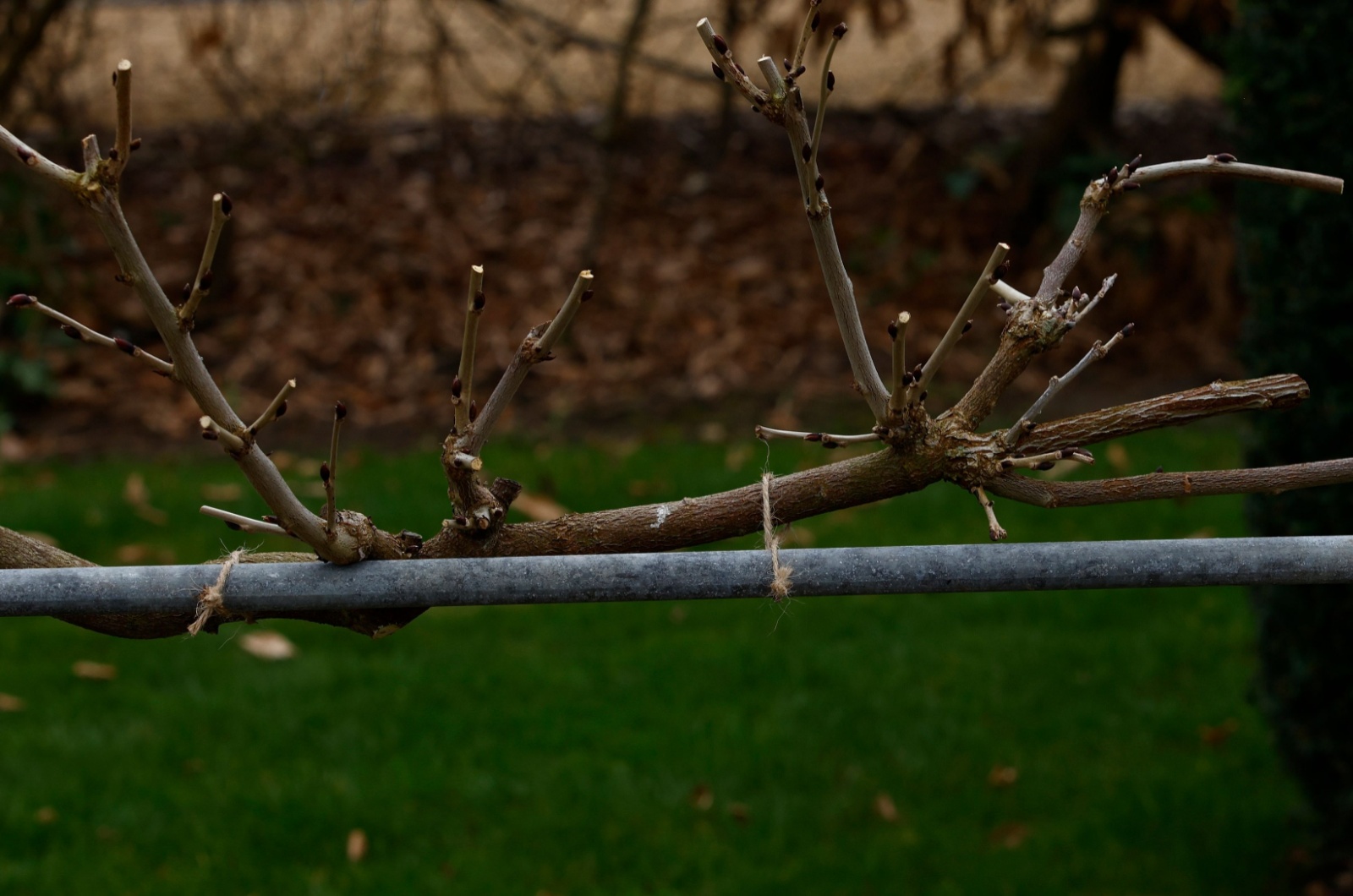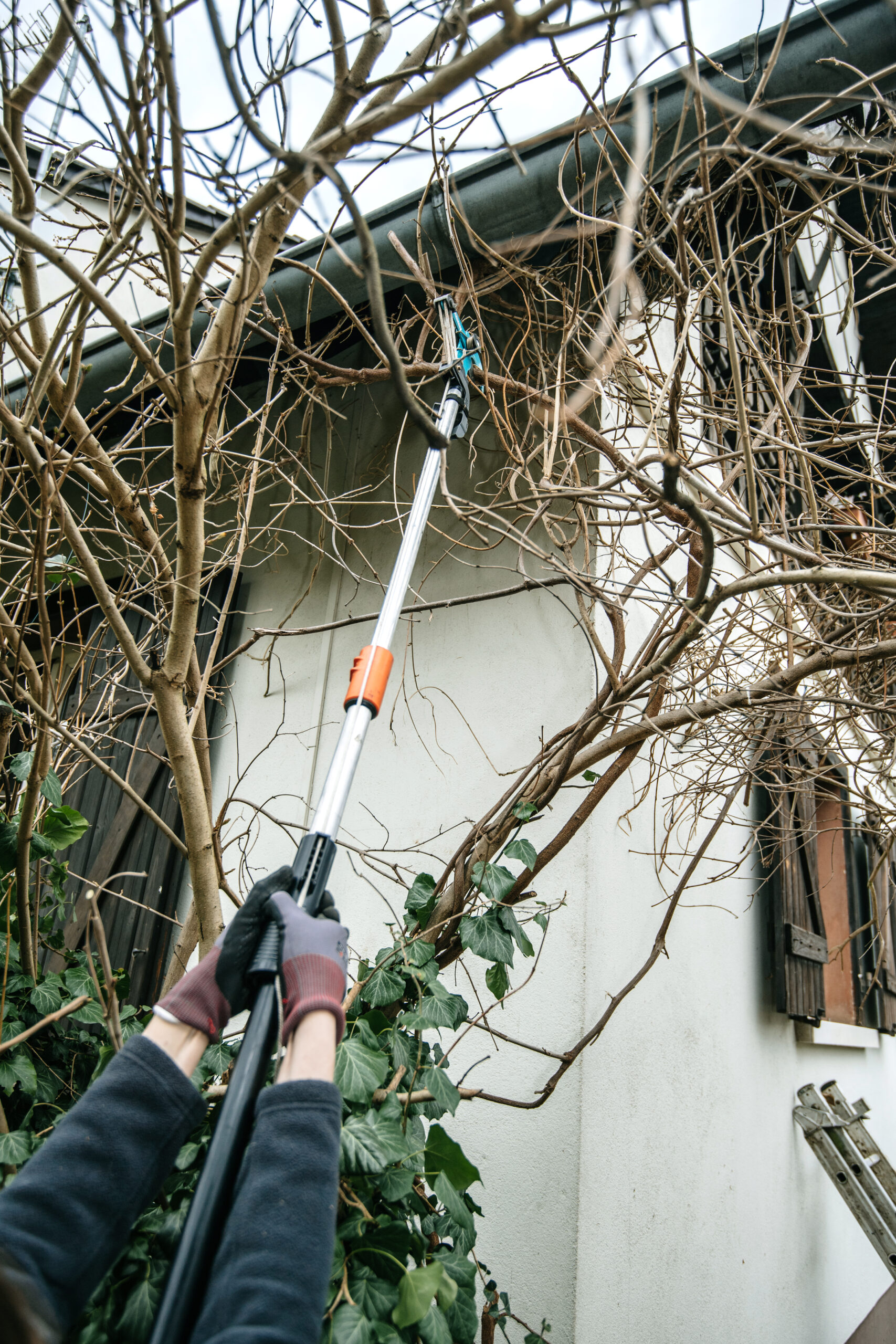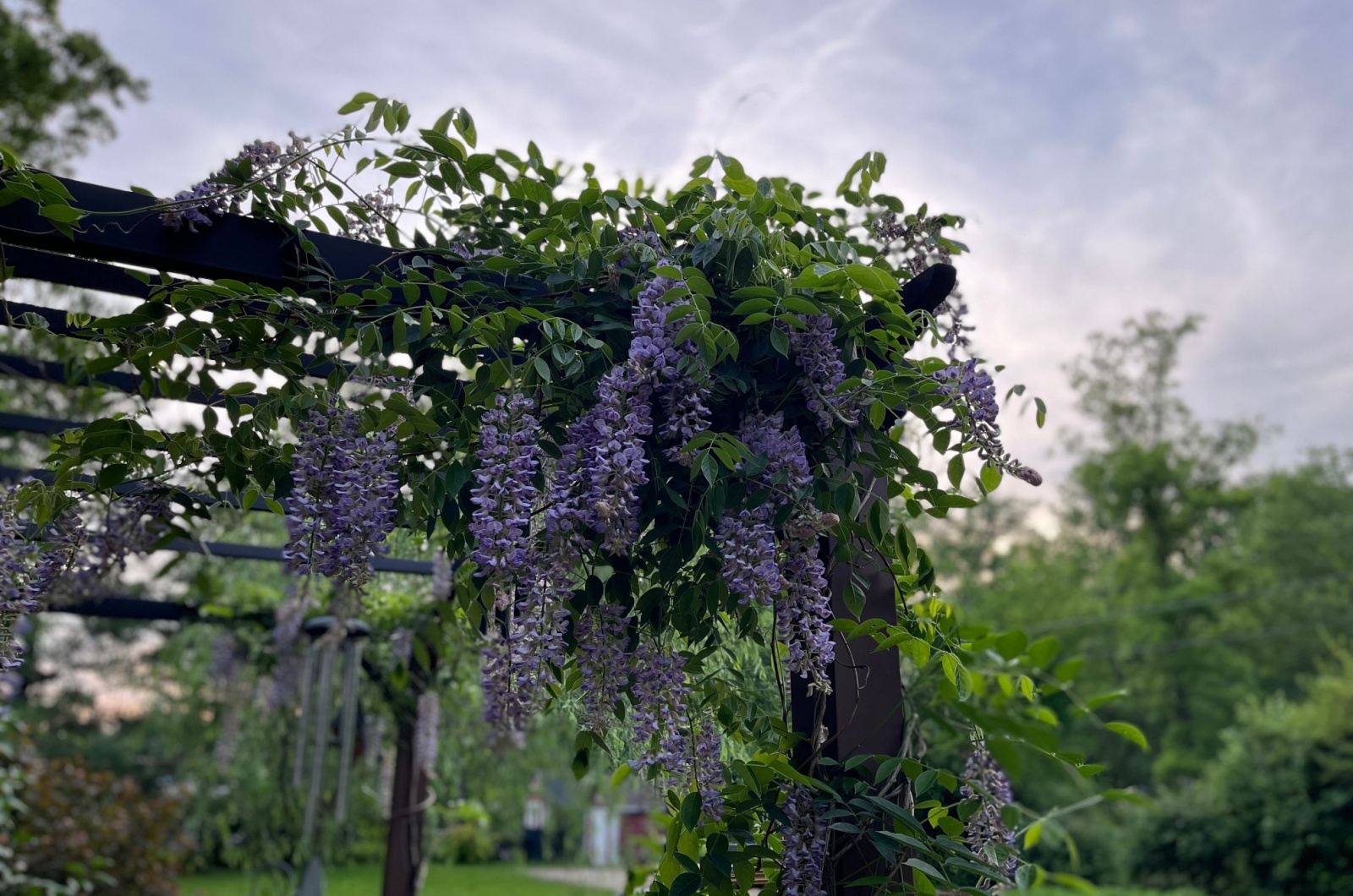Wisteria is one of those flowering beauties that can’t go unnoticed. There’s something so romantic about its twisted vines and clusters of scented blooms that leave everyone speechless.
Most gardeners will agree that this plant is on the easy side when it comes to maintenance. However, there’s one thing you should pay close attention to if you want to get the best out of it.
Yes, I’m talking about pruning, and that’s simply something you can’t skip if you grow this magnificent plant. New growth and blossoms won’t appear overnight!
Don’t know how to do it? Don’t worry, we’ve got you covered!
Summer Is The Ideal Time For The First Round Of Pruning
The last task on your summer to-do list for your wisteria plant should be pruning. At this point, wisterias are at their peak and the inner part of the plant is bushy and filled with lush vines.
But there’s one tiny problem here. The vines are overcrowded, which means light can’t reach all the plant parts and further development is affected.
So, the first goal of summer pruning is to remove branches to ensure more light.
The second goal is to control wisteria growth. Remember, this is a vigorous climber and can become unruly in a matter of months.
Pruning it immediately after flowering will keep it clean and tidy but it will also help the plant form new buds near the central branches of the vines. Your wisteria will be stronger and have a manageable structure!
I use hard pruners for my young wisteria and a pruning saw for my older one because of its thick, woody branches.
Here’s How I Prune My Wisteria In Summer
Now to the most important part: how to prune. Let me show you how I do it.
1. First, you should aim to remove the longer, leafy shoots. When pruning, do not remove more than 12 inches of a single branch. Make sure about 5 flower buds remain on the branch.
I don’t really worry about how much of my wisteria I prune; the focus is on suitable structure.
2. Always cut off all diseased or damaged wisteria wood so that the new growth has enough space to spread.
3. Get rid of all branches that cause overcrowding and make sure the major wisteria branches don’t cross over each other.
4. Do not leave any wisteria suckers on the ground level or you’ll end up with a messy and unruly plant.
Don’t Forget To Prune In Winter, Too
Wisterias are full of leaves at the end of the summer and it’s impossible to remove everything you need in one pruning.
In winter, wisterias lose their foliage, so it’s a perfect time for a second round of pruning. Leafy shoots won’t pose a problem once the spring arrives and new growth emerges.
You’ll need hand pruners for younger wisterias and a pruning saw for wisterias with thick and woody branches.
Here Are The Tips For Winter Wisteria Pruning
First things first, closely inspect your wisteria before you start pruning.
1. Remove all the branches from last summer that grew too long or out of place. Aim to trim the shoots to about 2-3 buds for a more spectacular bloom display the following spring.
2. Get rid of any diseased or damaged wisteria wood, including shoots that develop from the roots.
3. Make sure to leave all large flower buds intact because they’ll develop into large and full blossoms once May arrives.
4. Cut off weak growth and remove any crossing or rubbing wisteria branches.
Many gardeners use this opportunity to reshape their wisteria during winter pruning and get that famous tree or long vase form. But these shapes are optional; the overall health of your wisteria matters the most!
Wisteria takes more time to establish compared to other common vines. But once they’re fully established, they grow like crazy. I don’t fertilize my wisteria and it performs really well.
If you, for some reason, decide to feed the plant, make sure to use fertilizers with low nitrogen levels because they encourage leafy growth and you’ll have a lot to prune.
If Your Wisteria Grows On A Pergola, Do This
Wisteria makes a perfect vining plant for trellises, pergolas, and archways. If you grow this plant on a pergola, you’ll need to adjust your pruning technique.
1. Since your goal is for the wisteria blooms to cascade through a pergola or other overhead structure, you need to let one or two runners grow upward until they reach the desired height. Then, you can train them to spread horizontally in opposite directions.
2. Allow the wisteria buds near each pergola joist to grow next, ensuring that only one stem follows each joist.
3. This method enables you to cut your vining plant back to a single stem every January, followed by additional pruning in August.
Wisterias are true showstoppers but pruning must be on your list if you want to see all the blossoms. Well, now that you know when and how to do it, there’s nothing standing in your way of a bloom spectacle that’ll be the envy of the neighborhood!

